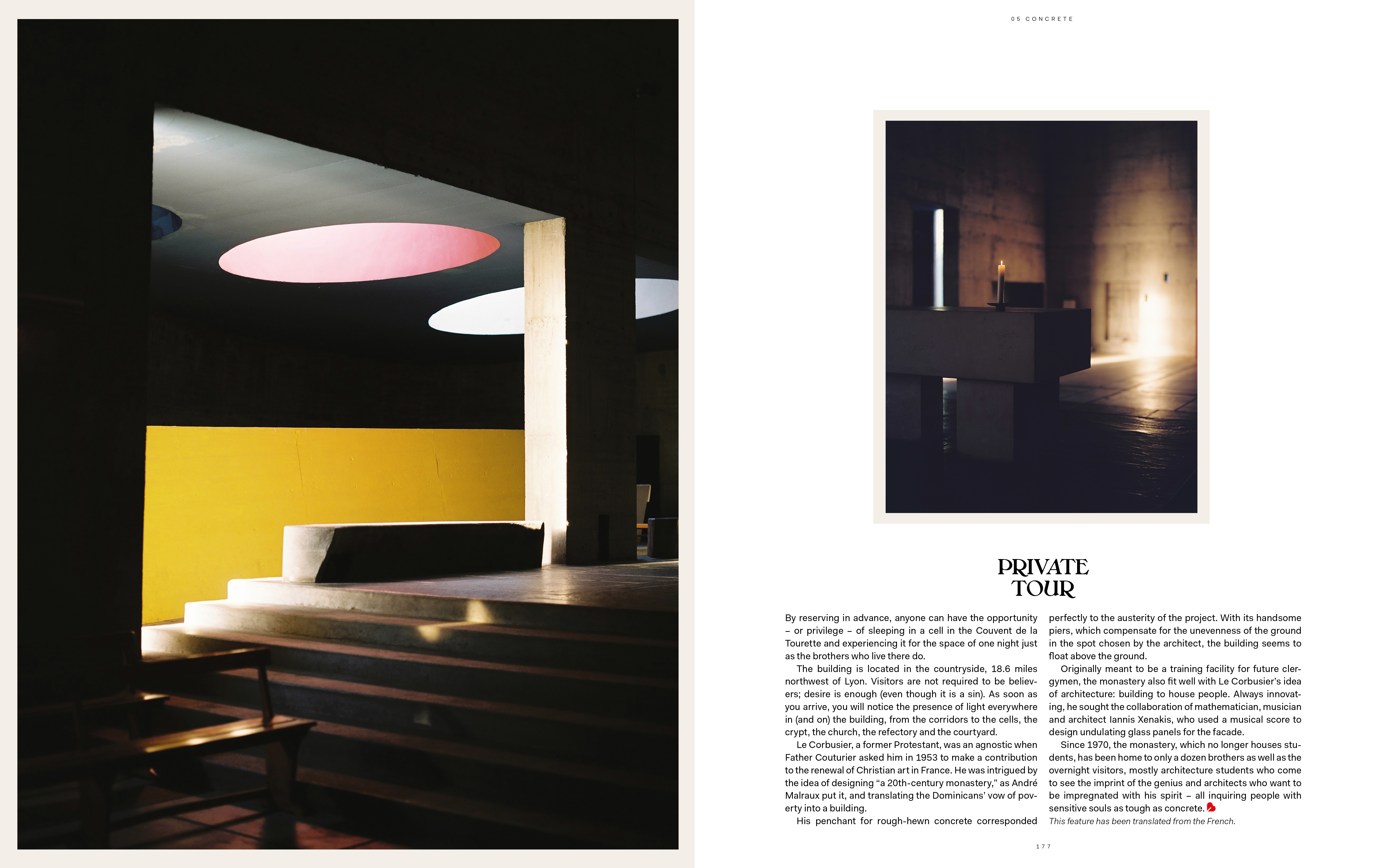Couvent Sainte Marie de la Tourette
Mastermind Magazine
In 1953, Le Corbusier designed a brutalist monastery that today houses both friars and contemporary art exhibits. This World Heritage site teaches visitors to discover buildings and people in a similar way: first the rigorous structure, then the inner light.
“The architecture of a monastery is a kind of mirror – it sends you back to yourself.”
MC: A characteristic of any great work of art is that it shapes you – and it shapes your observational powers. There is a sensibility behind Le Corbusier’s very assertive architecture. This is architecture that teaches you to look. And in that way, yes, it is spiritual.
OB: What do you mean by “teaches you to look”?
MC: It teaches you to be receptive, to retain your ability to be surprised. It’s a disposition of your gaze, your heart, that makes you available and prepares you, in the end, to meet the men and women of your time. I can see in the other person first a structure and then an inner light.
Extract from a discussion between Olivier Boucreux & Dominican friar and art historian Marc Chauveau
MC: A characteristic of any great work of art is that it shapes you – and it shapes your observational powers. There is a sensibility behind Le Corbusier’s very assertive architecture. This is architecture that teaches you to look. And in that way, yes, it is spiritual.
OB: What do you mean by “teaches you to look”?
MC: It teaches you to be receptive, to retain your ability to be surprised. It’s a disposition of your gaze, your heart, that makes you available and prepares you, in the end, to meet the men and women of your time. I can see in the other person first a structure and then an inner light.
Extract from a discussion between Olivier Boucreux & Dominican friar and art historian Marc Chauveau


